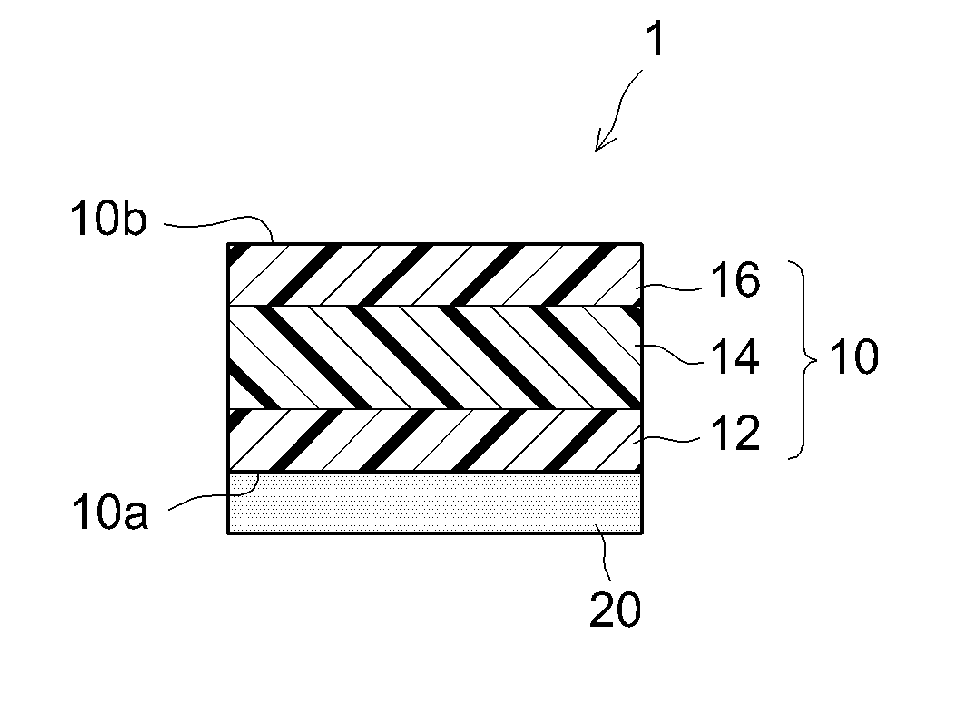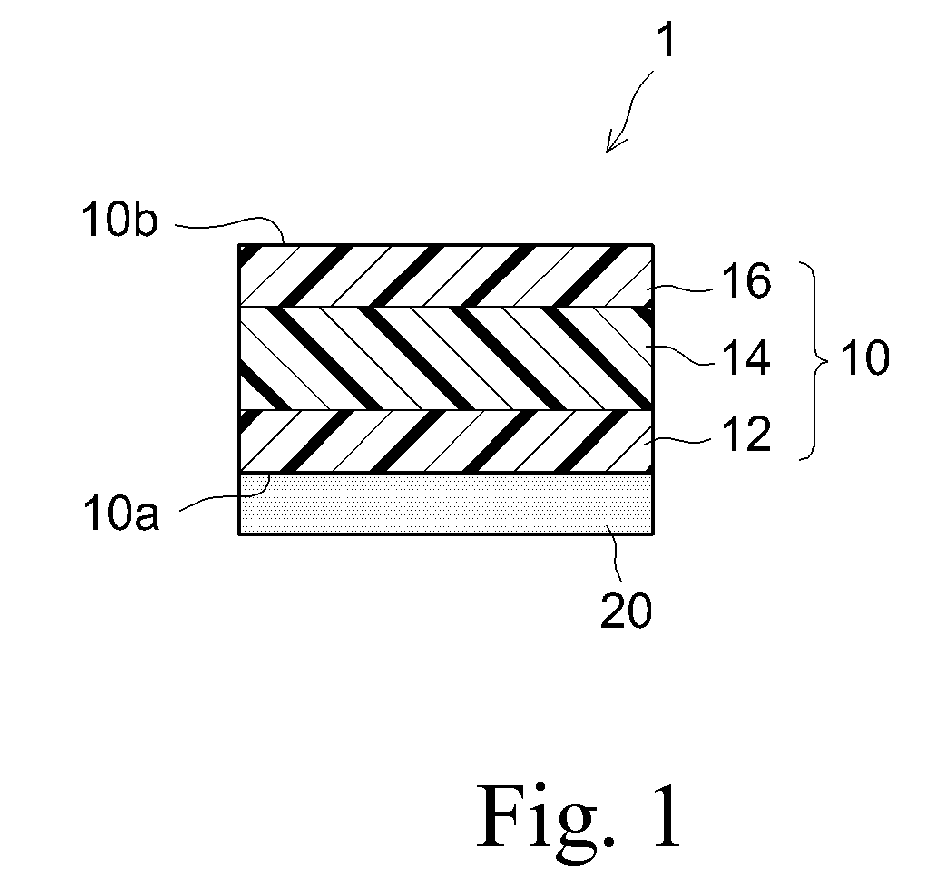[0007]It is preferable for the PSA layer provided in a paint film-protecting sheet to be comprised of a non-crosslinking PSA. When the protective sheet is affixed to a paint film, such a non-crosslinking type PSA layer does not easily build up strain in its interior and does not readily leave marks, traces or residues (hereinafter simply “marks”) on the paint film, thereby making it suitable for use as the PSA layer in a paint film-protecting sheet. As for the substrate of the paint film-protecting sheet, a resin film comprised primarily of
polyolefin (a polyolefin film) is preferred in order to optimize
weather resistance and other desirable properties. However, as compared with common acrylic-based PSAs and
natural rubber-based PSAs, prior attempts to utilize non-crosslinking PSAs (e.g., PSAs in which the base
polymer is polyisobutylene) have exhibited an insufficient adherence to polyolefin film substrates. Moreover, in recent years, the demand for a higher quality appearance of paint films has further intensified as part of an effort to increase the value of the goods (automobiles, etc.). Hence, there exists a desire for techniques which can better prevent adhesive transfer. A paint film-protecting sheet would be advantageous that is capable of having an improved ability to prevent adhesive transfer (adhesive transfer resistance), not only on paint films having a high smoothness, e.g., the surface of a new automobile, but even when the protective sheet is used on paint films having an undesirable surface state from the standpoint of preventing adhesive transfer, such as an
automotive paint film after the vehicle has been used (e.g., a paint film exhibiting small surface irregularities, such as a paint film that has been polished and / or touched up).
[0008]It is therefore an object of the present teachings to provide a paint film-protecting sheet comprised of a non-crosslinking type PSA layer disposed on a polyolefin film, which sheet is better able to prevent against adhesive transfer to a paint film.
[0013]Herein, the expression “PSA layer comprised of a non-crosslinking PSA” is understood as meaning a PSA layer which, at the time of PSA layer formation, is not deliberately treated (i.e., subjected to a crosslinking treatment, such as by admixing a crosslinking agent) so as to form chemical (covalent) bonds between the polymers making up the PSA. Because strain does not build up significantly in such PSA
layers (even if strain temporarily arises, it can be easily dissipated), non-crosslinking PSA
layers have properties that are highly suitable for PSA
layers to be used in paint film-protecting sheets; for example, when the sheet is affixed to and then removed from a paint film, such PSA layers do not readily leave marks on the paint film.
[0014]In the protective sheet thus constituted, it is possible for the PSA layer to exhibit excellent adherence to the front side (the side on which the PSA layer is provided) of the supporting substrate, thereby enabling adhesive transfer to the paint film to be prevented to a high degree. For example, this enables the protective sheet to exhibit better adhesive transfer resistance, even with respect to surfaces prone to adhesive transfer, such as surfaces that have been polished and / or touched up. The protective sheet thus constituted has excellent handling properties (e.g., ease of use during attachment to the adherend and stripping therefrom). The supporting substrate may be, for example, a film or sheet formed by T-die
extrusion.
[0017]The resin material of a paint film-protecting sheet disclosed herein may preferably contain no homopolypropylene, or may contain homopolypropylene in a proportion of 60 wt % or less (e.g., from 10 to 60 wt %) of the entire resin material. Paint film-protecting sheets, in which at least the front portion of the supporting substrate is comprised of (comprises) a resin material of the above composition, have a good ability to prevent adhesive transfer, and may also exhibit excellent handling properties (e.g., ease of use during attachment to the adherend and stripping therefrom).
[0019]In yet another embodiment of the paint film-protecting sheets disclosed herein, the supporting substrate preferably has a tensile modulus of elasticity at 23° C. of from 350 MPa to 850 MPa. Paint film-protecting sheets with such a supporting substrate have a good ability to prevent adhesive transfer and are capable of exhibiting excellent handling properties (e.g., ease of use during attachment and stripping and / or handling properties during manufacture of the paint film-protecting sheet).
 Login to View More
Login to View More 

